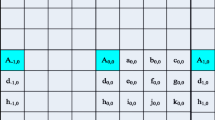Abstract
The recent High Efficient Video Coding (HEVC) standard introduces a new and complex interpolation filter for fractional-pixel motion estimation and motion compensation. Recent works propose hardware architectures to accelerate the interpolation filter, employing interpolation datapaths with many adders in parallel. Adder compressors are power-efficient operators, that are applied when intermediate additions are not required, which is the case for interpolation filters. This work evaluates the use of different 7-2 and 8-2 adder compressors structures in the interpolation datapaths of a recent HEVC interpolation filter architecture targeting power efficiency. Results show that 7-2 adder compressor (composed with basic 4-2 and 3-2 adder compressors) and 8-2 adder compressor (composed with basic 4-2 adder compressors) reduce power delay product by 16 and 19 %, respectively, compared with adders generated by the synthesis tool. These adder compressors achieved the best results in terms of PDP compared with many classical adders. The full interpolation filter architecture using the best adder compressors dissipates 9967.1 µW of power and consumes 28.21 pJ of energy per operation.










Similar content being viewed by others
References
ITU-T and ISO/IEC, High Efficiency Video Coding, ITU-T Recommendation H.265 and ISO/IEC 23008-2, 2013.
ITU-T and ISO/IEC JTC 1, Advanced video coding, ITU-T Recommendation H.264 and ISO/IEC 14496-10 (MPEG-4 AVC), 2011.
Sullivan, G. J., Ohm, J. R., Han, W. J., & Wiegand, T. (2012). Overview of the High Efficiency Video Coding (HEVC) Standard. IEEE Transactions on Circuits and Systems for Video Technology, 22(12), 1649–1668.
Bossen, F., Bross, B., Suhring, K., & Flynn, D. (2012). HEVC complexity and implementation analysis. IEEE Transactions on Circuits and Systems for Video Technology, 22(12), 1685–1696.
Diniz, C., Shafique, M., Bampi, S., & Henkel, J. (2013). High-throughput interpolation hardware architecture with coarse-grained reconfigurable datapaths for HEVC. In: IEEE international conference on image processing (ICIP), pp 2091–2095
Guo, Z., Zhou, D., & Goto, S. (2012). An optimized MC interpolation architecture for HEVC. In: IEEE international conference on acoustics, speech, and signal processing (ICASSP), pp. 1117–1120.
Afonso, V., Maich, H., Agostini, L., & Franco, D. (2013). Low cost and high throughput FME interpolation for the HEVC emerging video coding standard. In: IEEE latin american symposium on circuits and systems (LASCAS), pp. 1–4.
Huang, C. T., Juvekar, C., Tikekar, M., & Chandrakasan, A. P. (2013). HEVC interpolation filter architecture for quad full HD decoding. In: Visual communications and image processing (VCIP), pp. 1–5.
Lian, X., Zhou, W., Duan, Z., & Li, R. (2014). An efficient interpolation filter VLSI architecture for HEVC standard. In: IEEE China summit & international conference on signal and information processing (ChinaSIP), pp. 384–388
Kalali, E., & Hamzaoglu, I. (2014). A low energy HEVC sub-pixel interpolation hardware. In: IEEE international conference on image processing (ICIP), pp. 1218–1222.
Pastuszak, G., Trochimiuk, M. (2014). Architecture design of the high-throughput compensator and interpolator for the H. 265/HEVC encoder. Journal of Real-Time Image Processing, doi: 10.1007/s11554-014-0422-1
Zhou, W., Zhou, X., & Lian, X. (2015). An efficient interpolation filter VLSI architecture for HEVC. In: IEEE international conference on acoustics, speech and signal processing (ICASSP), pp. 1106–1110.
Chen, T. C., Huang, Y. W., & Chen, L. G. (2004). Fully utilized and reusable architecture for fractional motion estimation of H.264/AVC. In: IEEE international conference on acoustics, speech, and signal processing (ICASSP), pp. 9–12.
Lie, W. N., Yeh, H. C., Lin, T. C., & Chen, C. F. (2005). Hardware-efficient computing architecture for motion compensation interpolation in H.264 video coding. In: IEEE international symposium on circuits and systems (ISCAS), pp. 2136–2139.
Zatt, B., Silva, L. M. L., Azevedo, A., Agostini, L., Susin, A., & Bampi, S. (2013). A reduced memory bandwidth and high throughput HDTV motion compensation decoder for H.264/AVC High 4:2:2 Profile. Journal of Real-Time Image Processing, 8(1), 127–140.
Lv, H., Wang, R., Xie, X., Jia, H., & Gao, W. (2012). A comparison of fractional-pel interpolation filters in HEVC and H.264/AVC. In: Visual communications and image processing (VCIP), pp. 1–6.
Weinberger, A. (1981). 4-2 carry-save adder module. IBM Technical Disclosure Bulletin, 23(8), 3811–3814.
Prasad, K., & Parhi, K. (2001) Low-Power 4-2 and 5-2 compressors. In: 35th Asilomar conference on signals, systems and computers, pp. 129–133.
Altermann, J. S., Costa, E. A. C., & Bampi, S. (2010). Fast forward and inverse transforms for the H.264/AVC standard using hierarchical adder compressors. In: IEEE/IFIP VLSI system on chip conference (VLSI-SOC), pp. 310–315.
Rouholamini, M., Kavehie, O., Mirbaha, A. P., Jasbi, S. J., & Navi, K. (2007). A new design for 7:2 compressors. In: IEEE/ACS international conference on computer systems and applications (AICCSA), 2007, pp. 474–478.
NanGate 45 nm Open Cell Library. www.nangate.com/?page_id=22. Accessed November 11, 2015.
Cadence Encounter RTL Compiler v. 8.10. Available at: www.cadence.com. Accessed November 11, 2015.
Author information
Authors and Affiliations
Corresponding author
Rights and permissions
About this article
Cite this article
Diniz, C.M., Fonseca, M.B., da Costa, E.A.C. et al. Evaluating the use of adder compressors for power-efficient HEVC interpolation filter architecture. Analog Integr Circ Sig Process 89, 111–120 (2016). https://doi.org/10.1007/s10470-016-0765-6
Received:
Revised:
Accepted:
Published:
Issue Date:
DOI: https://doi.org/10.1007/s10470-016-0765-6




